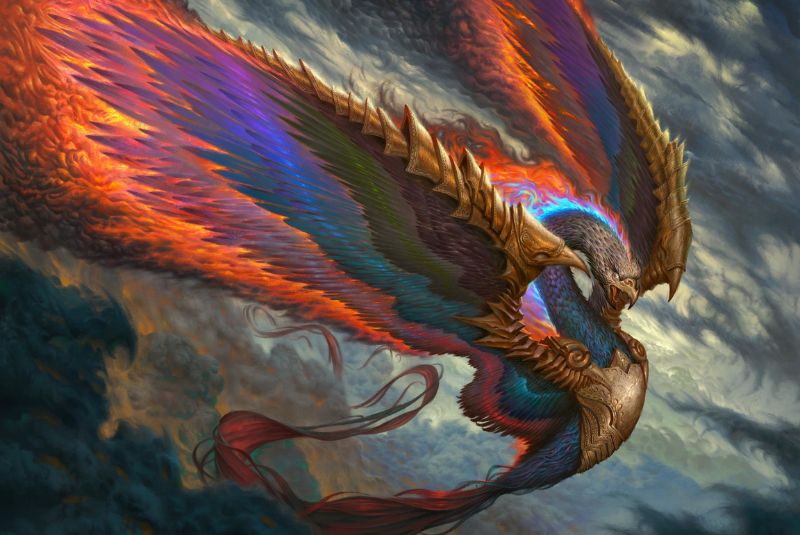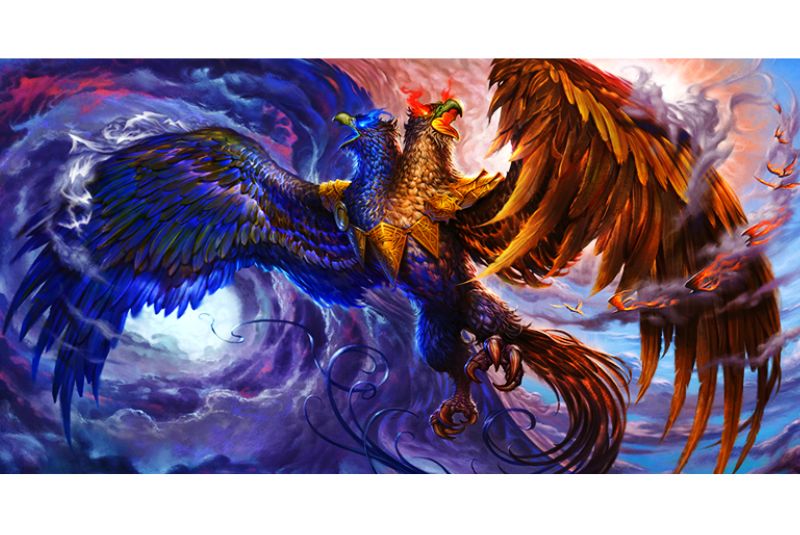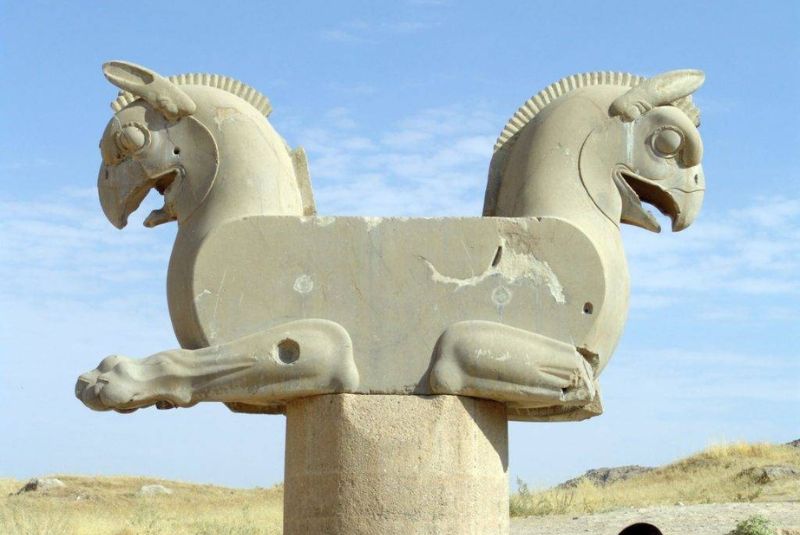Huma Bird: Exploring the Mystical Legends and Reality
The Huma bird, often regarded as one of the most fascinating mythical creatures, has left an indelible mark on the tapestry of human imagination across numerous cultures and religions.
This magnificent and elusive avian entity has been a source of wonder and inspiration for generations.
In this article, we embark on an enchanting expedition into the depths of Huma bird mythology, aiming to uncover its significance in a multitude of cultural and religious contexts. Let's embark on this captivating voyage to unravel the captivating legend and reality of the Huma bird, a creature that has transcended geographical boundaries and epochs to emerge as a symbol of profound cultural and spiritual importance.
Mythological Origins
The Huma bird, deeply rooted in the rich tapestry of mythology, finds its earliest and most prominent origins in the annals of Persian mythology. In Persian lore, the Huma bird is often described as a magnificent, immortal creature with awe-inspiring features. This mythical bird is believed to possess a unique connection to the heavens, serving as a bridge between the earthly realm and the celestial spheres.

One of the central roles of the Huma bird in Persian mythology is its association with profound symbolism. It is heralded as a symbol of fortune, purity, and immortality. In this context, the Huma bird is believed to bring blessings and good fortune to those fortunate enough to witness it. It is said that anyone who encounters the Huma bird is destined for a life of prosperity and happiness. Its purity and immortality signify the unending cycle of life, death, and rebirth, a concept deeply ingrained in Persian spirituality.
Beyond Persian mythology, the Huma bird's significance transcends borders and has found its place in the tapestries of other cultures as well. In Islamic folklore, the Huma bird is revered as a creature of great importance. It is believed to possess the power to bestow kingship and sovereignty upon individuals of exceptional virtue. This symbolism emphasizes the Huma bird's role as a harbinger of divine blessings and destiny.
In South Asian folklore, particularly in the Indian subcontinent, the Huma bird takes on a slightly different interpretation. Here, it is often associated with the concept of transformation and spiritual enlightenment. The sighting of a Huma bird is seen as a profound spiritual experience, signaling a personal transformation or a journey toward higher consciousness. This variation in interpretation highlights the flexibility and adaptability of the Huma bird's symbolism as it weaves its way through diverse cultural narratives.
Physical Description and Characteristics
In the realm of mythology, the Huma bird is depicted as a creature of extraordinary beauty and grace, its physical appearance shrouded in an aura of mystique. Descriptions of the Huma bird vary across cultures, but several common elements persist in its portrayal.

Physical Appearance
In Persian mythology, the Huma bird is often described as resembling a large, majestic bird with stunning plumage that shimmers with an otherworldly luminosity. Its feathers are said to exhibit a kaleidoscope of colors, ranging from iridescent blues and greens to vibrant golds and reds. These radiant feathers are believed to reflect the ever-changing hues of the sky, symbolizing its celestial nature.
The Huma bird is typically depicted with a long, graceful neck and a slender, elegant body. Its wings are expansive and regal, resembling those of a mythical phoenix. Its eyes are often described as deep and soulful, reflecting wisdom and ancient knowledge.
Unique Characteristics
One of the most intriguing aspects of the Huma bird lies in its unique abilities and symbolic attributes. It is believed to possess the power to bestow blessings upon those it favors. The touch or mere presence of the Huma bird is said to bring good fortune, prosperity, and happiness. This blessing is considered a divine gift, emphasizing the bird's role as a harbinger of positivity and auspiciousness.
Furthermore, the Huma bird is closely associated with the sun, and this connection is laden with symbolism. Just as the sun rises each day, bringing light and life to the world, the Huma bird is seen as a symbol of renewal and rebirth. Its presence is believed to herald new beginnings and the dawning of a brighter future. This connection to the sun underscores its celestial and transcendent nature.
Symbolism and Cultural Significance
The Huma bird's symbolism transcends its mythical origins, permeating various aspects of culture, from art and literature to religion. Its enduring presence in these realms speaks to its profound cultural significance and the universal themes it represents.

Symbolism in Culture
- Art: Throughout history, artists have been captivated by the mystique of the Huma bird. Its radiant plumage and celestial aura have made it a popular subject in visual arts. Paintings, sculptures, and tapestries often depict the Huma bird as a symbol of beauty, transcendence, and divine grace. Its portrayal in art reflects its role as an emblem of the extraordinary and the ethereal.
- Literature: In the world of literature, the Huma bird is a recurring motif in stories and poems. Its symbolism extends beyond its physical attributes, representing the unattainable and the pursuit of higher truths. It often embodies the idea of transformation, where characters aspire to attain Huma-like qualities, such as wisdom, purity, and enlightenment. This symbolism serves as a powerful narrative device in conveying themes of personal growth and spiritual awakening.
- Religion: The Huma bird's presence in religious contexts underscores its divine significance. In Islamic culture, it is seen as a symbol of kingship and divine favor. The Huma bird's feathers are believed to grant rulers their legitimacy and power, emphasizing its role as a conduit of divine will. This symbolism is deeply rooted in religious ceremonies and rituals, reinforcing the Huma bird's importance in the spiritual realm.
Transformation and Spiritual Enlightenment
The Huma bird is often associated with the idea of transformation and spiritual enlightenment. Its mythical status as a creature that traverses between the earthly and celestial realms symbolizes the journey of the human soul. The Huma bird's presence in cultural narratives serves as a reminder that personal growth and spiritual awakening are attainable goals. It encourages individuals to aspire to higher states of being, just as the Huma bird ascends to the heavens.
Examples in Literature and Art
One notable example of the Huma bird's presence in literature is found in Persian poetry, particularly the works of renowned poets like Rumi and Attar. In Attar's "The Conference of the Birds," the Huma bird represents the ultimate spiritual quest and the search for truth.
In art, the Huma bird has been depicted in various forms across different cultures. Persian miniature paintings often feature the Huma bird as a symbol of regal beauty and divine grace. Similarly, Indian art showcases the Huma bird as a harbinger of transformation and spiritual awakening in intricate paintings and sculptures.
Real-World Counterpart
Amidst the captivating realm of mythology and symbolism, a debate among scholars and naturalists has persisted, seeking to uncover the potential real-world counterpart of the elusive Huma bird. While the Huma bird is undeniably a creature of legend and imagination, some intriguing theories and possibilities have emerged over the years.
The existence of a real-world counterpart to the Huma bird remains a subject of debate and speculation. Some contend that the Huma bird could have been inspired by sightings of rare and exotic bird species that possess distinctive features or behaviors. Others argue that the Huma bird is a purely mythical creation, woven into the fabric of culture and belief without a direct biological source.

Real Bird Species as Inspiration
Several bird species have been proposed as potential inspirations for the mythical Huma bird. One such candidate is the hoopoe (Upupa epops), a striking bird with a distinctive crown of feathers atop its head. The hoopoe's unique appearance, including its tufted crest and vibrant plumage, might have influenced the visual representations of the Huma bird in art and folklore.
Another contender is the sunbird, a group of small, brilliantly colored birds found in various regions. Sunbirds are known for their iridescent plumage, which could have inspired the vivid descriptions of the Huma bird's radiant feathers. These birds are often associated with sunlight and are sometimes seen as symbols of beauty and splendor.
Scientific Explanations
From a scientific perspective, the legend of the Huma bird can be understood as a product of cultural and symbolic evolution. It is not uncommon for cultures to create mythical creatures that embody values, beliefs, and natural phenomena. In the case of the Huma bird, its connection to the sun may reflect the human fascination with celestial bodies and the desire to bridge the earthly and divine realms.
Moreover, the Huma bird's ability to bestow blessings and its role as a symbol of transformation may be metaphors for the positive influences of nature and spirituality on human life. In this sense, the Huma bird serves as a representation of human aspirations and the quest for higher meaning.
The Huma Bird in Modern Times
The enigmatic Huma bird, deeply rooted in ancient mythology, continues to exert its influence on contemporary culture and art, leaving an indelible mark on the modern world.

Influence on Contemporary Culture and Art
Despite the passage of centuries, the Huma bird's symbolism and allure have not waned. In modern times, the Huma bird is frequently employed as a symbol of beauty, transcendence, and aspiration. Its majestic plumage, often depicted with a radiant array of colors, continues to inspire artists and designers worldwide. From fashion to interior design, the Huma bird's graceful form and celestial aura find their place in various artistic expressions. Its presence in contemporary art serves as a testament to its enduring appeal and timeless significance.
Festivals and Traditions
The Huma bird also maintains a presence in certain festivals and traditions, particularly in regions where its mythology remains deeply ingrained. In Iran, the annual Nowruz celebration, marking the Persian New Year, features the Huma bird as a prominent symbol. During this festive occasion, families gather to set a "Haft-Seen" table, adorned with seven symbolic items that begin with the Persian letter 'S.' Among these items, the Huma bird, represented by a beautifully crafted figurine or artwork, is placed to invoke blessings and good fortune for the coming year. This tradition underscores the Huma bird's enduring role as a harbinger of prosperity.
Enduring Popularity
Anecdotes and stories of the Huma bird's enduring popularity abound. For instance, in contemporary literature, authors often draw upon the bird's symbolism to convey profound themes of transformation and self-discovery. Readers encounter narratives where characters embark on quests to attain Huma-like qualities, mirroring humanity's eternal pursuit of enlightenment and personal growth.
In popular culture, the Huma bird occasionally makes appearances in films, television series, and video games. Its mythical qualities are harnessed to add depth and mystique to fictional worlds, captivating audiences and inviting them to ponder the deeper meaning behind its symbolism.
The Huma bird's journey through time—from its origins in ancient mythologies to its continued presence in contemporary culture—serves as a testament to its enduring power as a symbol of beauty, transformation, and the pursuit of higher truths. In an ever-changing world, the Huma bird's significance remains unwavering, a reminder of the timeless themes that unite humanity across cultures and generations.
Bottom Line
The Huma bird's symbolism extends far beyond ancient tales. It continues to influence contemporary culture and art, serving as a source of inspiration in various artistic expressions, from fashion to interior design. Additionally, the Huma bird plays a role in certain festivals and traditions, such as the Nowruz celebration in Iran, where it symbolizes blessings for the new year.
The enduring popularity of the Huma bird is reflected in its presence in literature, where it serves as a symbol of transformation and self-discovery. Moreover, its occasional appearances in modern media add depth and intrigue to fictional worlds, captivating audiences.
The Huma bird, with its rich history and multifaceted symbolism, is a testament to humanity's enduring fascination with the mystical and the transcendent. Its timeless relevance lies in its ability to encapsulate universal themes of beauty, transformation, and the quest for higher truths. We encourage readers to explore further and delve into the depths of the rich cultural heritage associated with this mythical creature. In doing so, we can gain a deeper appreciation for the enduring allure of the Huma bird and the profound impact it continues to have on our world, bridging the gap between the realms of myth and reality.


Comment
Leave a Comment